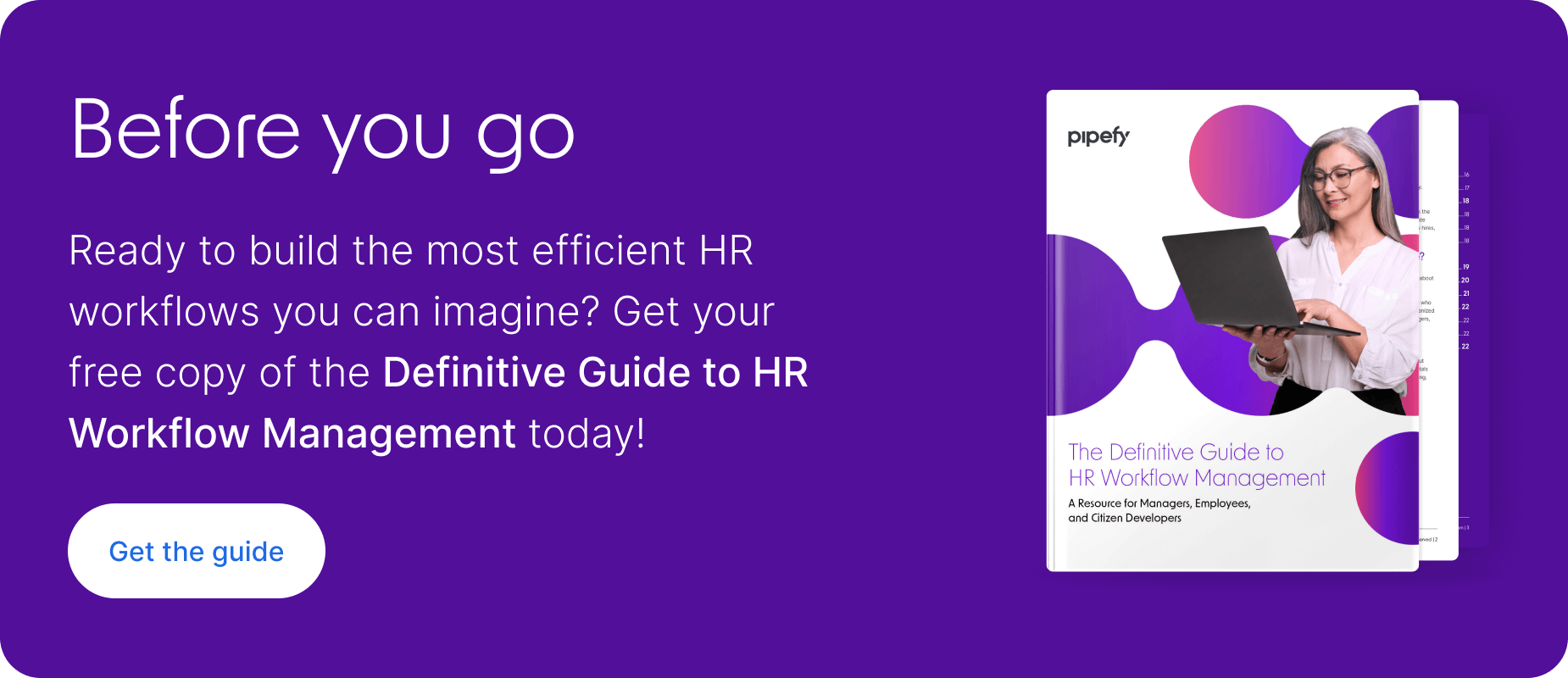ARTICLE SUMMARY
HR service delivery is the cornerstone of employee experience. The trick is finding a way to handle volume and complexity without sacrificing quality.

What is HR service delivery?
HR service delivery refers to the processes, tools, and methods HR teams use to take care of employees.
HR (and People Ops) teams are responsible for a wide range of company functions such as payroll and benefits, ongoing development, onboarding, and offboarding employees. HR is also tasked with responding to and resolving a variety of employee requests and HR cases. To execute these activities, teams rely on HR service delivery.
HR service delivery is the method or model by which these services are delivered. HR service delivery also includes how HR departments communicate changes or updates to employee benefits to a company’s workforce.
HR service delivery models and their benefits
HR departments rely on several HR service delivery models and methods in order to reach and interact with employees. Some commonly used examples include:
| Model type | Definition | Pros and cons |
|---|---|---|
| Traditional service delivery | This service model typically relies on a team of HR generalists who handle day-to-day HR functions, enforce company policies, and administer services like pay, benefits, and leave equally. | Pro: Workload is shared equally, keeping the team’s priorities balanced; short-term bottlenecks are limited due to the team’s ability to step in when a backup is needed. Con: Potential for bottlenecks or disjointed communication |
| Shared service delivery | This model divides the HR workload among a team that consists of several HR professionals, such as HR specialists and HR generalists. The division of HR tasks and expertise is typically split among 3 branches of HR: expertise centers (generalists/admin), shared service centers (advisors/policy), and business partners (consultants/business unit strategy). | Pro: HR teams can focus on the tasks they specialize in and big-picture planning, making for more streamlined and consistent processes. Con: Unexpected bottlenecks may be introduced. A lack of proper technology could slow teams down; and without proper process mapping and planning, HR tasks and responsibilities may be unintentionally offloaded to non-HR employees like managers. |
| Self-service delivery | As the name implies, this service model gives employees the freedom to access information or answer questions on their own through self-service technology like chatbots or interactive, internal platforms. | Pro: Employees are able to seek information on their own with the assistance of a company-wide knowledge base; company policies are available to everyone. Con: If the knowledge base is not properly managed or chatbot functions are not built properly, a self-service-only model may make seeking help difficult and create confusion. |
| Tiered service delivery | Depending on the employee’s needs, the tiers of assistance become progressively more personalized but usually escalate from self-service to meeting with someone in HR. | Pro: HR teams only get involved when specialized assistance is required. Con: The opportunities to add automation to this service model are limited as the tiers escalate. |
Tiered service delivery model (expanded)
The tiered service approach combines the benefits of self-service and the shared service model. While the structure of a tiered service delivery model may vary, there are typically four tiers that make up this service model:
- Tier 0: Self-service
- Tier 1: Speak with an HR generalist
- Tier 2: Escalate to an HR specialist
- Tier 3: Meet face-to-face (or virtually) with an HR partner

Tier 0: Self-service
This is the entry point for employees. Before speaking with someone on the HR team, employees seek answers or guidance from internal resources like company directories, knowledge libraries, or automated chatbots. If they need more information, they will move on to the next tier. An example of this is an employee searching for a specific company policy or document that has been shared publicly with employees.
Tier 1: Speak with an HR generalist
At this level of service, employees are able to communicate with an HR generalist or someone that can answer or handle high-level questions and requests. Since this person works within the HR department, they can escalate a request to the next tier if required. Building off the previous example, this could be an employee asking a question about a company policy if information is not readily available or made public to employees.
Tier 2: Escalate to an HR specialist
This tier is reserved for complex cases. Employees usually reach this level of service if an HR generalist does not have the proper knowledge or admin permissions to complete their request. If they still require more assistance, they will be directed to a person in order to resolve the issue. An example for this could be seeking assistance that’s less informational and more action-oriented.
Tier 3: Meet face-to-face (or virtually) with an HR partner
This tier is strictly reserved for employee requests that require direct interaction with HR. This could be related to something like strategic planning with leadership or advising an employee with a professional or personal problem.
How HR service delivery has changed
The COVID-19 pandemic led to a total workforce transformation — and one that especially affected HR departments. Previous to this shift, HR was focused on running the show behind the scenes and functioned as the quiet heroes of a company. Today, HR is considered an essential business partner that helps drive overall functions and growth of a company.
As employees were forced to go remote and adopt new business procedures, HR teams faced a higher volume of requests and responsibilities as the complexity of their roles increased as well.
Improve employee experiences with automation
HR departments need the ability to scale dynamically as the company needs change, the volume of requests swell, and the complexity of their roles continues to increase. At the same time, teams are under pressure to improve employee experiences. One way to satisfy both requirements is with HR automation.
With HR automation, HR teams can improve employee experiences and increase process efficiency by eliminating repetitive tasks. For example, automating employee requests. With this extra, manual work out of the way, HR teams are able to pay more attention to what matters most: people.
Here’s a breakdown of the ways automation can improve HR service delivery:
- Better request management. Automating employee requests ensures the right people are notified and assigned to the request, which keeps items in motion and improves accuracy.
- Faster time-to-resolution. By updating request statuses and alerting stakeholders when items are approaching a deadline (or when requests or tasks have remained stagnant), service delivery workflows and deliverables are sped up.
- Streamlined HR responsibilities. By removing manual updates and unassigned tasks, HR teams can remove the guesswork from their service delivery and build HR systems that are consistent and reliable.
- Improved employee experience. With faster request resolution and better communication, employees have visibility into the status of their requests and are looped in throughout the progression.
3 HR service delivery best practices
Here are some key best practices that should be applied, no matter which model or method your team adopts:
1 – Keep it scalable
A key lesson HR departments learned following the pandemic’s effects these past two years is that speed is essential. As internal processes and needs quickly change, scalability is important and keeps high-volume request management possible.
2 – Make it user-friendly
An HR service delivery model built by people for people can improve the overall effectiveness of the services being delivered or provided. By leveraging low-code HR automation software with a drag-and-drop interface makes it easy to build and implement HR workflows.
3 – Be transparent
Improve employee experience by giving employees more visibility into the status of their requests and consolidating request management, document access, and relevant information in one place. Take process transparency further and gather business intelligence with data reporting and dashboards to improve HR and people ops workflows.
HR service that puts people first
The complexity and volume of employee service requests create challenges that impede HR service delivery. Many requests depend on input or action from people in many departments. For example, when an employee submits a request to change benefits enrollment, that request workflow requires collaboration between HR, finance, and benefits teams (at the very least).
This collaboration and interconnected workflows and tasks when not automated leaves teams bogged down with extra work and increases the chances of errors, delayed work, and ineffective collaboration and communication.
By simply automating tasks like email updates, status changes, notifications and alerts, data intake, and even document generation, HR and people operations teams are able to reclaim their lost time and invest it back into building company culture and creating better employee experiences.






